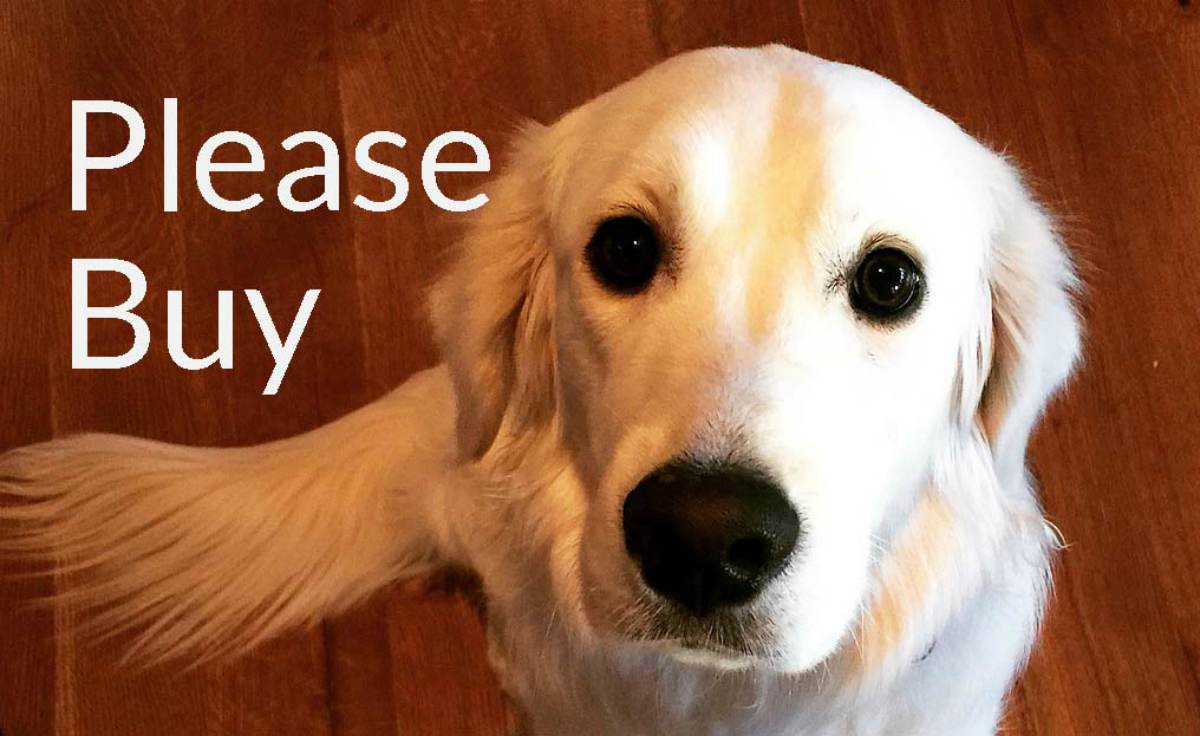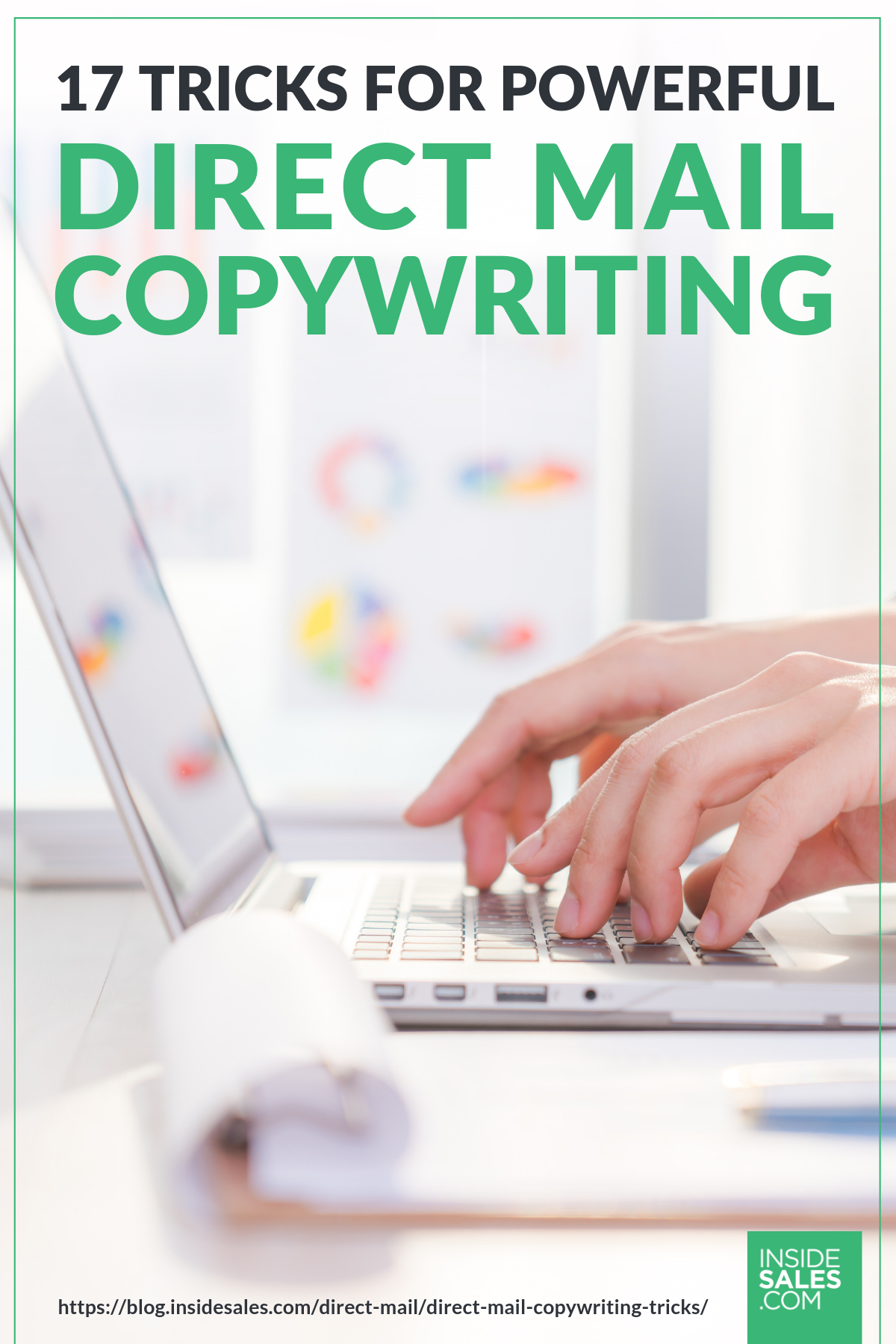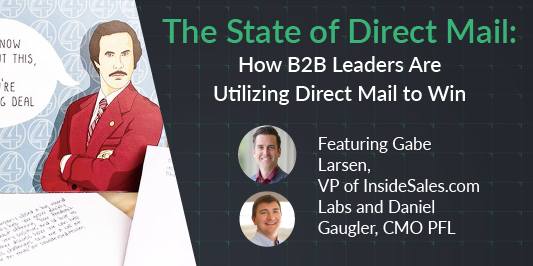17 Tricks For Powerful Direct Mail Copywriting
Livia Stancu
Direct response marketing is a powerful tool for marketers and salespeople alike, which is why we’ve listed some tricks you can use for your future direct response copywriting needs. Read on to find out more.
RELATED: The One Thing That Matters For Your Direct Mail Campaign
In this article:
- Why Direct Mail Matters
- Direct Mail Copywriting and Planning
- Types of Direct Mail
- No Fancy Fonts, Stick to the Basics
- Use Powerful Headlines
- Don’t Be Afraid of Using White Space
- Use Empathy
- Be the Industry Expert
- Don’t Sell a Product, Sell a Solution
- Elicit Emotions
- …But Don’t Just Shock People for the Sake of It
- Use Testimonials
- Think Out of the Box With 3D Direct Mail
- Personalize, Personalize, Personalize
- Incorporate Some Direct Mail Images
- Create Hot Spots
- Never Market Without Tracking and Testing
- Sending Automated Direct Mail with Your CRM
- Focus on Your Target Market Instead of on Yourself
- Be a Sharp Editor More Than a Great Writer
17 Tips to Boost Your Direct Mail Copywriting and Direct Response Marketing
Direct Response Marketing Definition: This type of marketing campaign aims to evoke a direct and immediate response from consumers to marketers.
Why Direct Mail Matters
In the sea of unsolicited email sales pitches and cold calls, there are very few creative sales plays that actually stand out. This is why direct mail is seeing a resurgence as an effective sales tactic.
Many professional marketing and sales departments are now including direct mail into their outreach strategies, to increase their chances of success. And rightly so: reports have shown that direct mail response rates increased significantly in 2018.
It garnered a 9% response rate for house lists. With prospects lists, it was able to get a 4.9% response rate.
These are impressive response rates compared to digital marketing campaigns. In fact, they are the highest levels the DMA has tracked since 2003, as per IWCO Direct.
Direct mail is the practice of sending physical items (cards, letters, even small gifts or gift cards) in an attempt to create a connection or relationship with a prospect.
Direct Mail Copywriting and Planning
Before you invest in a fantastic direct mail campaign though, spend some time first on essentials:
- Persona – an imaginary person based on the key qualities that make up your target market
- List – a way of segmenting the people who you plan on sending your direct mail towards
- Geography – the location or locale of your choosing. Localizing your marketing efforts helps your direct response and have better overall results.
CRM Trends shows that only 20% of the response to your direct marketing campaign will come as a result of your awesome copywriting. Sorry, folks!
About 80% of your responses are due to how well targeted your list is and how interesting your offer is to target audience.
Targeting is an essential part of effective direct response marketing. Thus, you should make sure that you don’t neglect this in the planning stage.
For the purpose of this article, we’re going to assume your list is all cleaned up, you’ve tested response rates, know your target audience, demographics, and personas, and your offer is the best on the block. Simple, right?
Types of Direct Mail
Based on how you’re structuring your campaign, you can have indirect response mailers and direct response campaigns. If you’re interested in the immediate engagement of your audience, you’re going to use direct response campaigns.
As far as what your direct mail looks like, you can choose from a variety of formats:
- Classic Package (a letter and a response or order form): This format usually relies heavily on the letter to persuade the prospect. It is one of the most common types of direct mail, but also not as affordable as others.
- Self-Mailer: This type of direct mail costs less than the classic package. It is usually a large piece of paper that is folded so that it is about the same size as an envelope.
- Postcards: Using postcards for your direct mail campaign will be cheaper if you’re using the standard-sized postcard. Of course, larger postcards will cost you more.
- Newsletters: This format is an excellent way to succeed with your direct response marketing efforts. By keeping your consumer updated on the goings-on of your business, you highly improve your relationship with your potential customers.
- Catalogs, Brochures, and Booklets: With these formats, you give a brief overview of your business’s services and product offers. It can help entice potential customers to transact with your business.
- Letters: Plain letters are a great way to communicate directly with your consumers. With this format, you will really need to power up your direct-response copywriting skills.
Let’s look at all the creative elements that make your direct mail campaign successful, and pick out some winning tactics to maximize your conversions: we’ll look at fonts, copy, outreach strategy, medium, and images.
1. No Fancy Fonts, Stick to the Basics
You can mix and match it up while using a maximum of three different fonts for your direct mailers. Depending on the size of your material, you might want to use just one type of font.
A professional designer will be able to help you pick the right font for your card. Here are a few resources on where to find free fonts:
Tip: Handwritten fonts generate a higher response on direct mailers.
2. Use Powerful Headlines
The headline is the most crucial part of any copy. Industry experts confess that they spend more time crafting a title for their marketing material than they ever do on the content itself.
This is because of people’s tendency to just ‘scan’ things, rather than read—they will most likely go over your title, read a few introductory sentences, and if you do not catch their eye, your direct mail goes directly in the bin.
Here are a few tried and true ways to make your title into pure eye candy:
- Make a title short and catchy (around 65 characters is optimal)
- Use familiar words for the title to be legible by a general audience (no industry jargon, please)
- Use emotional and power words to make an impact
3. Don’t Be Afraid of Using White Space
Listen.
People do read.
You just need to get their attention.
And nothing does this better than white space. There’s an interesting book that you might wish to read if you are looking to improve your visual design skills.
It’s titled creatively: “White Space is Not Your Enemy.” And the same can be said about your direct mail design—don’t be afraid to use white space to your advantage.
Short sentences, two to three words, are very powerful. Make sure you don’t abuse this strategy—your message needs consistency in order to be effective.
4. Use Empathy
Empathy gets you a long way when writing for sales.
What is your user thinking? What is their immediate need, with respect to your product?
How would they really be delighted by the experience, if they were to choose your service?
Put yourself in your client’s shoes, and understand why they truly need or want your service—above all else, and you will be able to find the perfect offer.
5. Be the Industry Expert
This goes without saying, but people won’t consider your offer unless you are the absolute best in your field.
Lots of adjectives (‘awesome’, ‘fantastic’, ‘great’) are a weak proposition when trying to get someone to respond to direct mail. Go for facts, not marketing fluff.
Research and statistics are the base for that, and they should help position you as the expert in your field.
You can achieve this in many ways. One of the most effective way to improve your branding as an industry expert is through excellent content marketing.
RELATED: Everything You Need To Know About Using Direct Mail In Sales
6. Don’t Sell a Product, Sell a Solution

This is an old marketing trick, but it pays to make it work for you—and it’s surprising how many companies still don’t see the value of selling a solution instead of a product.
The truth is, it’s hard work to be in tune with your customer—to understand and spend the time to research their needs, their pain points. It’s easier to just slap 50% off, or a ‘buy one, get one free’ tagline.
Your product or service needs to solve a problem for your customer—to ultimately make their life better. If you’re not truly convinced that’s what you are doing, why do it at all?
7. Elicit Emotions
Research has shown time and again that users judge a brand by using emotion, not informational content. Ads that generated the best emotional response made a 23% lift in sales volume, according to a 2016 Nielsen report.
A study of some of the most famous images on imgur.com showed that in comparison, negative emotions were less common in viral content than positive emotions. Although that is the case, viral success occurs when the images with negative emotions had an element of anticipation and surprise.
8. …But Don’t Just Shock People for the Sake of It
It’s natural to evoke emotion, but don’t go just go for the shock value. When emotionally charged ads fail, they will elicit the opposite response—and your strategy backfires.
There are a few primary human emotions you can tap into. Joy, sadness, anger, anticipation, and surprise.
Depending on what your campaign is aimed at, you might appeal to other more complex emotions: vanity, trust, need of belonging, or even competitiveness, fear of missing out.
9. Use Testimonials

Advertising is all around us, so we’ve become somewhat immune to the noise. We’ve trained our brains to ignore or push back on any sales-type messages from the get-go.
In the digital realm, we call this the ‘banner blindness’ effect.
The Banner Blindness Effect Definition: It is a phenomenon in the website usability which refers to when visitors consciously or subconsciously ignore what appears to be banner-like ads on a website.
This is where referrals come in.
Why sell a product, when you can have your customers do it for you?
Using testimonials in your direct mail will build trust—especially if we are talking about a powerful name-drop (celebrity endorsements) or someone whose reputation resonates with the audience (endorsement from an industry expert).
10. Think Out of the Box With 3D Direct Mail

Three-dimensional mailers are a cool way to show off your creativity, and they are a sure-fire way to impress your targets. They could be letters or self-mailers, either way, they are bound to get your prospects’ attention.
Direct mailers can be shaped like a box, a plane, or a tree. You can certainly stand out in the crowd with this type of tactic.
Be sure to use them sparingly though—they will be more expensive than regular direct mail, so target them only at your most important targets, and the ones most difficult to reach.
Here’s a slideshow of cool direct mail examples for inspiration.
11. Personalize, Personalize, Personalize
Based on industry, time of the year or audience segment, you will have different response rates for your campaigns. You can only find the sweet spot by testing, and we encourage you to do that as often as possible.
In this day and age, people want to see the human side of a business. It is your job to give the people what they want, so personalize the buyer experience as much as you can.
12. Incorporate Some Direct Mail Images
Words are never going to be incredibly effective on their own. For the geeks out there, this is called the picture superiority effect.
Picture Superiority Effect Definition: The phenomenon which states that pictures are likely to be recognized and remembered than words.
To make the best of this effect, you should have a professional designer on your team to help with your direct mail piece. If you insist on a DIY piece, here’s a few tips to make your images stand out:
- Use images which elicit a powerful emotional response (everyone likes babies, cats, dogs, sports, or food… And if you don’t… what kind of monster are you?).
- Colorful images will do better than plain dull colors or black and white.
- Use pictures that are relevant and resonate with your target audience.
- Make sure to respect copyright when using any image in your marketing projects.
13. Create Hot Spots
Direct mail copywriting makes heavy use of hot spots to draw the user’s attention. The title, the first paragraph, the last paragraph, and post-scriptum (PS) are going to be natural hot spots for any text-heavy material.
You can create additional hot spots by using bold, different fonts, images, even white space. Again, a professional designer might help here.
14. Never Market Without Tracking and Testing
Like always, XANT does not recommend starting any campaign without having a way to track and test your results. There are different ways that you can measure the results of a direct mail campaign, here are a few:
- Custom URLs
- Phone numbers
- Promotion codes
- Vouchers, gift cards
- Email click-through rates, when used as part of a digital and direct mail sales cadence
15. Sending Automated Direct Mail with Your CRM
Nowadays, technology is used to help people achieve so much more than before. It can even help you manage relationships with your customers, both current and potential ones.
You can spend less time trying to nurture your prospect relationship in their buyer journey and more time developing other aspects of your direct-response advertising efforts. Although you shouldn’t be neglecting it, of course.
You are only increasing the time you have to focus on other things.
16. Focus on Your Target Market Instead of on Yourself
A lot of people who are just starting out in the business of direct response marketing tend to focus on the products that they think their potential customers want. This way of thinking is ineffective and will get you nowhere.
What you should focus on instead are the needs and wants of your consumers. Direct response copywriting thrives better when you focus less on you and more on your target market.
There is plenty of sales management software that you should check out that can help you manage your relationships with customers.
17. Be a Sharp Editor More Than a Great Writer
Whether your direct response marketing efforts are on social media, on paper, or on emails, you should know that it is less about being a great writer. Instead, you should be a sharp editor.
To truly develop your marketing efforts into a higher level, you should run your copy through editing several times. You’ll find that you can do with less of the fluff and more of the meaningful content.
We hope you got something useful out of our direct mail copywriting guide. Spending enough time to plan out the strategy, message, and purpose of your direct mail campaign will ensure that you get your money’s worth.
The good news is, writing direct mail for your customers has become a lot easier, thanks to modern technology. Salespeople can now send direct mail in an automated fashion, straight from the CRM—with just a few clicks.
You can watch the webinar on B2B direct mail to understand how this works!
Which of the tricks listed above have you tried to level up your direct mail copywriting? Let us know in the comments section below!
Up Next:
- The Power Of Direct Mailers W/John Coe @B2BMarketing.com
- 8 Days Of Email Marketing | Guide To Email Sales
- Sales Best Practices Every Sales Professional Should Know
Editor’s Note: This post was originally published in October 2017. It has been updated for quality and relevancy.

